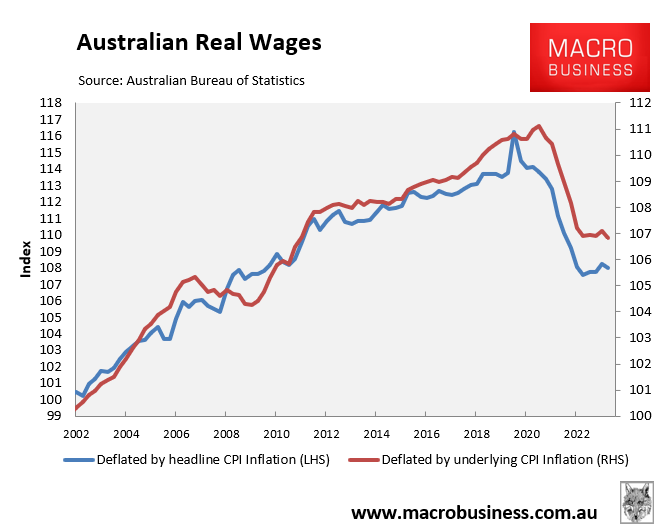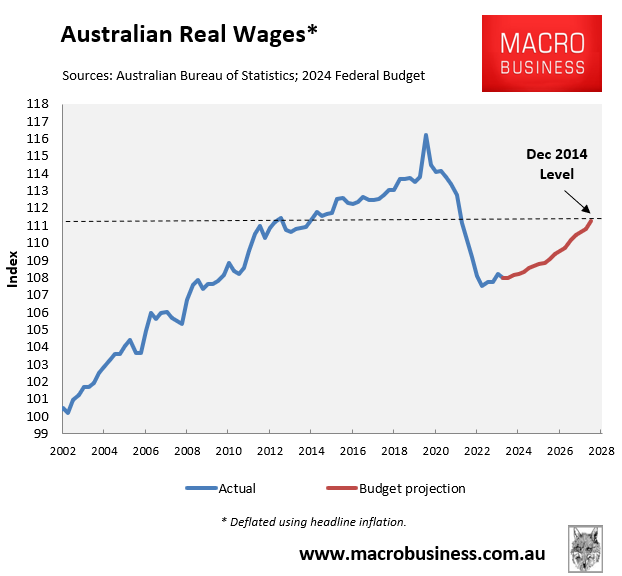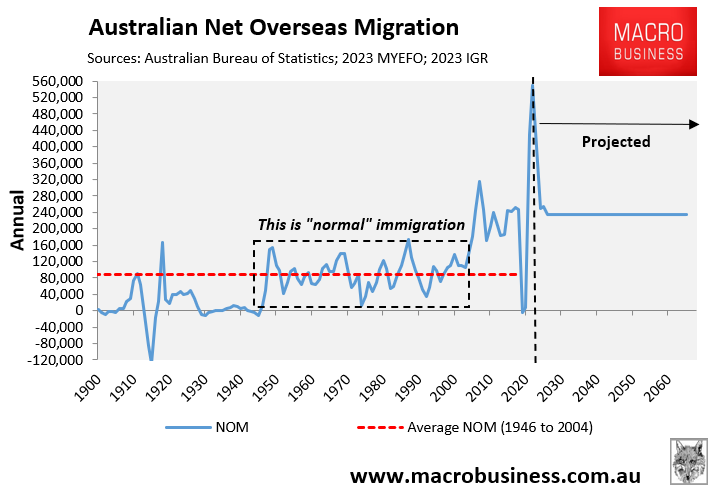This week, the Australian Bureau of Statistics (ABS) reported that Australian wage growth had once again turned negative after nominal wage growth (0.8% in the March quarter) grew by less than CPI inflation (1.0% headline, 1.1% underlying).
The result meant that Australian real wages have fallen by 7.1% from their peak when deflated by headline CPI inflation and by 3.8% from their peak when deflated by underlying inflation:

When adjusted for headline CPI, Australian real wages were tracking at June 2020 levels. And Tuesday’s federal budget projected that real wages will only recover to December 2014 levels by mid-2028:

As a result, the federal budget projects that Australians will have lost around 14 years of progress in living standards.
You will notice from the above chart that real wages in mid-2028 are still expected to be 4.3% below their June 2020 peak.
Therefore, it will very likely take more than a decade before Australian real wages recover their losses.
A lot will depend on whether the federal government is successful in cutting net overseas migration (NOM) as projected by the federal budget.

But even if annual NOM is reduced to the 235,000 level projected in the latest Intergenerational Report, it would still be very high by historical standards and would merely ensure that wage growth mirrors the low-flation experience of the last decade.
Regardless, the wage growth projections in the federal budget illustrate why the 2020s will be a lost decade for Australians.

